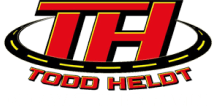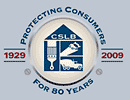Pavement markings play a crucial role in maintaining road safety and ensuring efficient traffic flow. They provide valuable information and guidance to drivers, cyclists, pedestrians, and other road users, helping them navigate the roads more effectively and adhere to traffic regulations. By understanding the different types of pavement markings and their meanings, you can become a more informed and safer user of the road.
In this listicle, we will provide an overview of the various types of pavement markings commonly used in road construction. From centerlines and lane markings to crosswalks and symbols, you will learn the meanings behind these markings and how they contribute to creating a safe and efficient transportation infrastructure. By understanding the language of pavement markings, you can navigate the roads with confidence and contribute to overall traffic safety. Let’s explore the world of pavement markings and discover their significance in our everyday journeys.
1. Longitudinal Markings: Centerlines and Lane Dividers
Longitudinal markings are traffic lines drawn along the length of a roadway, primarily serving as centerlines and lane dividers. These markings provide essential visual guidance to drivers, helping them stay within their designated lanes and maintain a safe distance from oncoming traffic.
- Solid Centerlines: Solid single lines indicate that passing is discouraged but not explicitly prohibited, although motorists should exercise caution when crossing them. When a solid double line is in place, passing is strictly prohibited from either direction.
- Dashed Centerlines: Dashed lines serve as the dividing lines between lanes and encourage passing when safe to do so. If the dashes are on your lane’s side, you’re allowed to pass if the road ahead is clear; however, if the dashes are on the opposite side, passing from your side is not permitted.
- Dashed and Solid Combination: A combination of dashed and solid lines indicates that passing is allowed for one direction (dashed) but prohibited for the other (solid).
2. Transverse Markings: Stop Lines, Crosswalks, and Parking Spaces
Transverse markings are found across the width of the roadway, providing guidance and instructions to road users. These markings indicate where vehicles should stop at intersections, designate pedestrian crosswalks, and outline parking spaces.
- Stop Lines: Typically found at intersections or crosswalks, stop lines are thick white lines that denote where vehicles should come to a complete stop before proceeding. These lines indicate the boundary between the traffic lanes and the pedestrian or intersection area.
- Crosswalks: Crosswalk markings are rectangular white bars painted on the pavement, perpendicular to the direction of pedestrian flow. These markings indicate designated crossing areas for pedestrians, where drivers must yield the right-of-way to crossing pedestrians.
- Parking Spaces: These markings outline designated parking spots, usually painted in white or yellow, and indicate how drivers should align and park their vehicles within the space.
3. Pavement Marking Colors: Decoding Their Meanings
The color of pavement markings plays a crucial role in conveying specific information to road users. Each color is associated with a different set of instructions or guidance.
- White Lines: White pavement markings indicate separation between lanes of traffic moving in the same direction, parking space outlines, stop lines, and crosswalks.
- Yellow Lines: Yellow lines are used to separate lanes of traffic moving in opposite directions, such as centerlines and two-way left-turn lanes. They also indicate no-passing zones when found in double solid lanes.
- Red Lines: Red markings are rare but can be found in some areas to indicate no stopping, standing, or parking zones.
- Blue Lines: Blue markings are used to designate accessible parking spaces for individuals with disabilities, ensuring these spaces are easily identifiable and available for those who need them.
4. Arrows, Symbols, and Specialized Markings
In addition to longitudinal and transverse markings, there are also specific pavement markings in the form of arrows, symbols, and specialized markings to provide critical guidance or warnings to road users.
- Directional Arrows: Arrows on the pavement indicate the direction in which traffic must flow. They are commonly found in turn lanes or channels, one-way streets, and bicycle lanes to reinforce the required flow of movement.
- Symbols: Symbols like bicycle or bus icons identify dedicated lanes for specific types of vehicles, such as bike lanes or bus lanes. These markings signal to motorists that the lane is reserved for the designated mode of transportation.
- Speed Bumps and Pedestrian Warnings: Yellow markings or warning signs may accompany speed bumps or pedestrian crosswalks to increase awareness and encourage drivers to slow down when approaching these areas.
Understanding the various types of pavement markings and their meanings is essential for maintaining safe and efficient traffic flow. By learning the language of these markings, both drivers and pedestrians can contribute to a safer transportation infrastructure and adhere to essential traffic regulations.
As a responsible driver or pedestrian, being cognizant of the meanings behind pavement markings can help you navigate the streets more safely and confidently. By ensuring we interpret and follow pavement markings correctly, we contribute to the overall goal of reducing traffic incidents and making our roads safer for everyone.
Pave Your Way to Safer Roads with Todd Heldt Excavating, Inc.
In conclusion, pavement markings play a critical role in creating a safe and efficient road environment for drivers, pedestrians, and cyclists. By understanding the different types of pavement markings and their meanings, road users can navigate confidently and contribute to overall traffic safety.
At Todd Heldt Excavating, Inc., we are committed to delivering high-quality asphalt and concrete services, including professional line striping and pavement marking solutions. Our experienced team ensures each project adheres to industry standards and complies with local guidelines, ensuring the highest level of safety and accuracy.
Whether you’re in need of roadway markings or markings for a parking lot, trust Todd Heldt Excavating, Inc. to provide reliable, precise, and visually appealing pavement markings to enhance road safety and functionality. Contact us today for a free consultation and quote, and let us help you create a safer, better-organized transportation infrastructure. Request a free consultation today for pavement marking services with Todd Heldt Excavating, Inc.





